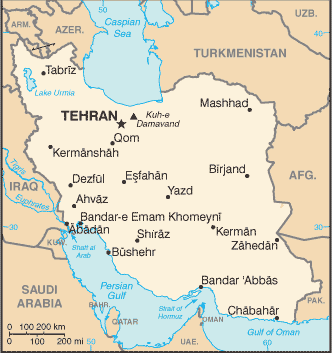The Iranian government has reportedly halted the production of 20 percent enriched uranium, by far the highest level enrichment ongoing in the country.
 Iran began producing 20 percent uranium in 2010 when efforts to secure fuel for the US-built Tehran Research Reactor (TRR) fell through, and they began to attempt to produce fuel rods for themselves. The TRR provides materially all of Iran’s medical isotopes for nuclear medicine.
Iran began producing 20 percent uranium in 2010 when efforts to secure fuel for the US-built Tehran Research Reactor (TRR) fell through, and they began to attempt to produce fuel rods for themselves. The TRR provides materially all of Iran’s medical isotopes for nuclear medicine.
Deputy head of the Iranian parliament National Security Committee Hossein Hosseini reported that Iran no longer needs to produce 20 percent uranium because it already has enough to make all the fuel rods the TRR will need for the foreseeable future.
Initially installed in 1967, the TRR was initially designed to run on weapons-grade (92%) uranium, but was converted to use 20 percent by an Argentine company in 1987.
The under construction Arak Reactor, which uses unenriched uranium, would eventually replace the TRR as the primary source of medical and industrial isotopes, though it is likely still quite some way from being operational at those levels.
The end of 20 percent uranium enrichment was a key demand of Western nations in any nuclear deal and will likely improve the chances for progress at upcoming nuclear talks, though Israel in particular has sought to shift discussion away from the increasingly irrelevant issue and start demanding concessions on Iran’s remaining 3.5 percent enrichment and the rest of its civilian program.





Oh my God! World peace is at hand. What is Washington and Tel Aviv to do?
You fools!
As soon as you agree to America's demands more and greater demands will be made on you.
That is how America (Isreals lapdog ) works.
While your sentiment is well taken, this was not a foolish move. They never planned on enriching 20% any longer (in fact, they never planned on enriching it at all, since they are entitled to purchase it under the NPT, but were repeatedly blocked and forced to produce their own) than they needed to produce the material necessary to provide radiation treatment to Iran's 800,000 cancer patients.
So Iran can enrich to 19 and 3/4 percent.
Or whatever the percentage Japan enriches it's uranium at.
Surely next Israel will be asked, in the spirit of fairness, to lower its uranium enrichment as well?
They are just lying! My evidence? Umm, ummm, we don't want the smoking gun to be a mushroom cloud. Oh yeah, that's clever. Gotta write that down.
This is good news though. They were forced to make their own. Iran should have been able to PURCHASE the 20% enriched for their medical isotopes from the IAEA monitored exchange program. They NEED it, since 800,000 cancer patients near Tehran need treatment. Now they are done, and any semblance of credibility to the claim that they are advancing towards weapons-grade enrichment is now gone.